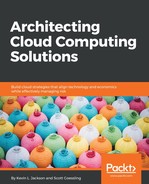The cloud computing era brings with it the need to design, build, and manage a business-focused ecosystem. Efficient communication and interaction across such an ecosystem require interoperability between the enterprise and its ecosystem partners. Since a universal set of standards does not exist and most likely won't exist shortly, these ecosystems can encounter a significant risk of vendor lock-in. An ecosystem's ability to use reusable components to build systems that work together out of the box depends on the enforcement of portability and interoperability governance. A particular concern for in-cloud computing this is critical during the deployment or migration of systems to a cloud service provider. A typical scenario is an inability to migrate some components to the cloud due to data management or data sovereignty regulations. Cloud migration requires portability of all migrating components as well as interoperability of those components with systems that remain on-premise.
Specific technology categories where portability and interoperability standards should be specified include the following:
- Data: Enabling the reuse of data components across different applications. Since data interoperability interfaces do not currently exist, this may require the use of data virtualization techniques.
- Applications: This focuses on interoperability between application components. These have SaaS deployed components, application modules leveraged in a PaaS, or infrastructure components consumed as IaaS. Similar issues arise in a hybrid environment when interfacing with a traditional enterprise IT environment or with client endpoint devices. Application portability enables the re-use of all application components across the entire hybrid IT environment.
- Platforms: This category addresses the re-use of service bundles that may contain infrastructure, middleware, or application components along with any associated data.
- Infrastructure: Interoperability and portability associated with various hardware virtualization technologies and architectures.
- Management: Management interoperability is interoperability between cloud services (SaaS, PaaS, or IaaS) and programs concerned with the implementation of on-demand self-service. Management may also include application programs concerned with the deployment, configuration, provisioning, and operation of cloud resources.
- Publication and acquisition: The self-service aspect of cloud computing gives end users the ability to acquire software, data, infrastructure and various other cloud services. Developers can also publish applications, data, and cloud services via online marketplaces. This category addresses interoperability between platforms and cloud service marketplaces, including app stores.
